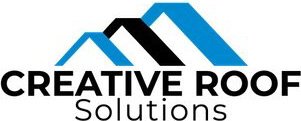How to Choose the Right Roofing Material for Your Climate
Your roof does more than just cover your home—it protects you from the elements, and the type of roofing material you choose can make a huge difference in how well it holds up over time. Different climates bring unique challenges, from intense sun exposure to heavy snowfall, relentless rain, or hurricane-force winds. Choosing the right material isn’t just about looks; it’s about durability, efficiency, and long-term performance. Let’s break down the best roofing options based on climate so you can make an informed decision for your home.
Understanding Roofing Material Options
Before diving into climate-specific recommendations, it helps to understand the basic roofing materials available. The right choice for your home depends on durability, cost, energy efficiency, and overall aesthetics. Here’s a breakdown of common roofing materials and how they compare:
Asphalt Shingles
Asphalt shingles are the most widely used roofing material due to their affordability and ease of installation. They come in a variety of colors and styles, making them a versatile option for homeowners.
Pros: Cost-effective, easy to install, and widely available. Many modern asphalt shingles are designed to be more durable and energy-efficient.
Cons: Lifespan varies significantly based on climate; extreme heat, wind, and hail can shorten their longevity.
Best for: Homeowners looking for an affordable, low-maintenance option that provides decent durability in moderate climates.
Metal Roofing
Metal roofing is gaining popularity due to its exceptional durability and energy efficiency. Available in aluminum, steel, copper, and zinc, metal roofs reflect heat effectively and provide strong protection against harsh weather conditions.
Pros: Long-lasting (40-70 years), resistant to extreme weather, lightweight, and energy-efficient. Some metal roofs are designed with interlocking panels to enhance wind resistance.
Cons: Can be noisy during heavy rain or hail, higher upfront cost than asphalt shingles.
Best for: Areas prone to hurricanes, heavy snow, or wildfires due to its superior durability and fire resistance.
Tile Roofing (Clay or Concrete)
Tile roofing offers a distinct, high-end aesthetic while providing excellent durability, especially in hot and dry climates. Clay and concrete tiles are known for their ability to withstand high temperatures while offering natural ventilation.
Pros: Long lifespan (50+ years), excellent heat resistance, fire-resistant, and low maintenance.
Cons: Heavy, requiring reinforced roof structures; expensive compared to asphalt or metal.
Best for: Hot, arid climates, such as the Southwest, where heat resistance is crucial.
Slate Roofing
Slate roofing is among the most durable and luxurious roofing options available. Made from natural stone, it is resistant to fire, weather, and insects.
Pros: Extremely durable (can last 100+ years), resistant to moisture and temperature changes, low maintenance.
Cons: Heavy (requires additional structural support), expensive, and difficult to install.
Best for: Homeowners looking for a premium, long-term roofing investment in moderate climates.
Wood Shingles & Shakes
Wood shingles and shakes provide a rustic, natural look, often made from cedar, redwood, or pine. While they offer good insulation, they are susceptible to fire, moisture, and pest damage if not properly treated.
Pros: Attractive, natural aesthetic, provides insulation benefits.
Cons: Requires regular maintenance, can be prone to fire unless treated, and may not withstand high moisture environments well.
Best for: Homes in moderate climates where natural aesthetics are a priority.
Best Roofing Materials for Hot and Sunny Climates
If you live somewhere with scorching summers and intense UV exposure, your roof needs to withstand heat without breaking down while also helping to keep your home cool.
Clay and Concrete Tiles: These materials excel in hot climates due to their natural heat resistance. Their ability to reflect sunlight and provide ventilation beneath the tiles helps regulate indoor temperatures, reducing cooling costs.
Metal Roofing: Known for its reflective properties, metal roofing bounces sunlight away from your home rather than absorbing it. Coatings with high solar reflectance can enhance energy efficiency even further.
Reflective Shingles: Some modern asphalt shingles come with reflective granules that help deflect heat, keeping attics and interiors cooler.
Cool Roofing Technology: Light-colored roofing materials, solar-reflective coatings, and specialized membranes can further enhance a roof’s ability to reduce heat absorption.
Roofing Solutions for Cold and Snowy Regions
Snow and ice pose serious threats to roofs, leading to leaks, ice dams, and even structural damage.
Metal Roofing: One of the best choices for snowy climates because its smooth surface allows snow and ice to slide off easily, preventing dangerous buildups.
Asphalt Shingles with Proper Insulation: While asphalt shingles alone aren’t the best for extreme cold, when combined with proper attic insulation and ventilation, they can help prevent ice dams and maintain interior warmth.
Roofing Reinforcements: Adding ice and water shields, installing proper drainage systems, and reinforcing the roof deck can protect against the weight and moisture of heavy snowfall.
Ideal Roofing for Rainy and Humid Environments
Excess moisture can lead to mold, mildew, and rot, making water resistance a key factor when selecting a roofing material.
Metal Roofing: With corrosion-resistant coatings, metal roofing provides excellent waterproofing and is highly resistant to mold and algae growth.
Slate: Naturally waterproof and one of the most durable roofing options available, making it ideal for wet climates.
Synthetic Roofing Materials: Some modern composite roofing products are engineered to resist moisture damage and prevent mold or algae growth.
Proper Installation Techniques: Ensuring high-quality underlayment, well-sealed seams, and an effective drainage system will help prevent leaks and prolong the life of your roof in wet climates.
Wind-Resistant Roofing for Storm-Prone Areas
If you live in a hurricane-prone region, you need a roof that can handle high winds and flying debris.
Metal Roofing: When properly installed with secure fasteners, metal roofs can withstand extreme winds, often up to 140 mph or more.
Impact-Rated Asphalt Shingles: Some specially designed shingles meet high wind and impact resistance standards, making them suitable for storm-prone areas.
Reinforced Roof Structures: In hurricane-prone areas, roof strapping and hurricane clips can add extra stability, reducing the risk of wind-related damage.
Roofing Choices for Coastal and Salt-Air Environments
Homes near the coast face a unique challenge: salt air corrosion, which can cause premature deterioration of roofing materials.
Metal Roofing with Protective Coatings: Galvanized or coated metal resists rust and corrosion, making it a popular choice for coastal homes.
Clay or Concrete Tiles: Naturally resistant to salt air, these materials hold up well in coastal environments and offer long-term durability.
Materials to Avoid: Wood and uncoated steel tend to deteriorate quickly in coastal settings due to moisture and salt exposure, making them less suitable for beachfront properties.
The Role of Energy Efficiency and Insulation in Roofing Choices
Your roof isn’t just a protective layer—it plays a key role in your home’s energy efficiency. The right roofing material, paired with proper insulation and ventilation, can significantly lower heating and cooling costs while improving overall comfort.
Reflective Roofing Materials: In hot climates, materials like metal roofing, light-colored asphalt shingles, and specially coated tiles can reflect sunlight and reduce heat absorption. This helps keep indoor temperatures lower, reducing the need for air conditioning.
Proper Insulation & Ventilation: Insulation is essential for energy efficiency in all climates. In colder regions, a well-insulated roof prevents heat loss, keeping heating costs down. In warmer climates, proper ventilation prevents heat buildup in the attic, reducing the strain on cooling systems. Roofing systems that integrate ridge vents, soffit vents, and reflective barriers can optimize airflow and insulation performance.
Cool Roofing Technology: Advanced roofing solutions, such as cool roof coatings, membrane roofing, and energy-efficient shingles, are designed to reflect more sunlight and absorb less heat. These materials meet Energy Star and LEED certification standards, making them a great choice for homeowners looking to reduce their carbon footprint and lower energy bills.
Solar Roofing Integration: Pairing solar panels or solar shingles with an energy-efficient roofing material can further enhance sustainability. Homeowners looking to maximize energy efficiency should consider solar-ready roofing solutions that accommodate solar installations without compromising insulation or ventilation.
Matching your roofing material with the right insulation and ventilation strategy can make a big impact on your energy bills. Consulting a roofing expert ensures you choose the best combination for year-round energy efficiency and comfort.
Maintenance and Longevity: What to Expect Based on Your Climate
Every roofing material has a different lifespan depending on where you live.
Asphalt Shingles – 15-30 years, but shorter in hot, sunny climates.
Metal Roofing – 40-70 years with proper care.
Tile and Slate – Can last over 100 years but require sturdy support.
Wood Shingles – Around 30 years, but prone to mold in humid areas.
Routine maintenance, such as clearing debris, checking for leaks, and ensuring proper drainage, can extend the life of your roof significantly.
Making the Right Roofing Decision for Your Home
At Creative Roof Solutions, we specialize in helping homeowners find the perfect roofing solution. Whether you're considering traditional roofing materials, metal roofing, or integrating solar technology, our team has the expertise to guide you through the process. Contact us today to schedule a consultation and take the next step toward a durable, energy-efficient roof!




